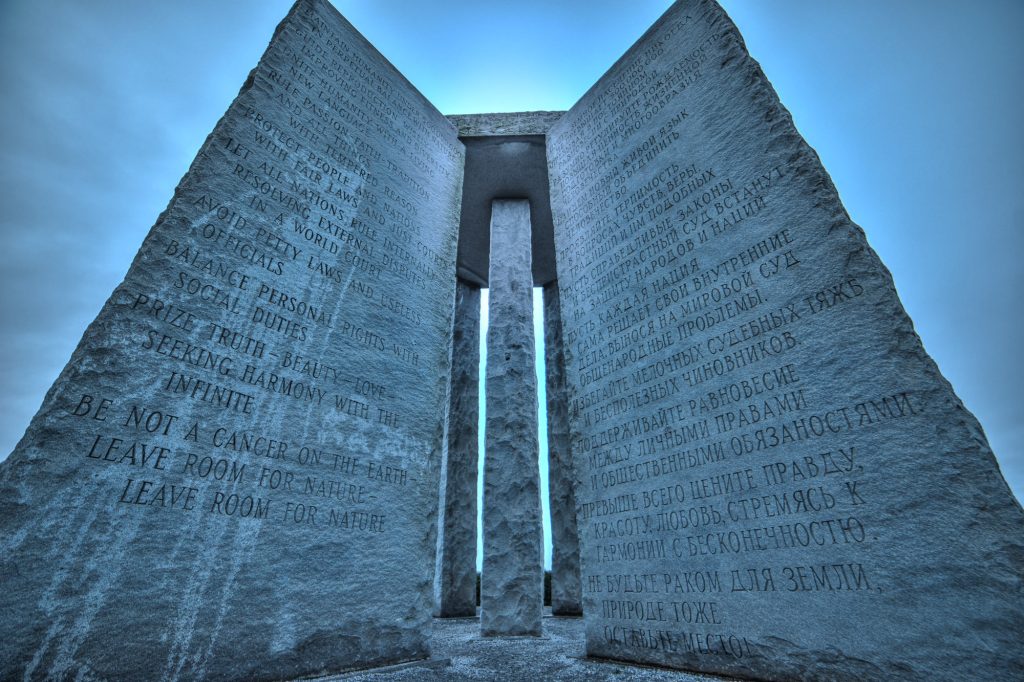The person who blew up 'America's Stonehenge' may get 20 years in prison.
In July 2022, someone detonated explosives at the Georgia Guidestones, a landmark made of inscribed blocks of granite that was sometimes dubbed 'America’s Stonehenge' for its vague resemblance to Britain’s prehistoric monument (the Guidestones were built in the 1970s). The perpetrator, who has not yet been caught, is assumed to be one of the conspiracy theorists who thinks the stones are symbols of some evil force such as Satan or the ‘New World Order’. Regardless of their motive, they may well be charged with domestic terrorism, and face a minimum sentence of 20 years in prison.
Comparatively, that is a hefty punishment. It is significantly longer than the maximum prison time the state of Georgia gives out for various human-harming offences, including aggravated stalking, extortion and the sexual battery of a child. To some people, this may seem unjust: why should harm to inanimate objects be seen as worse than harm to human beings?
One response would be that the destruction of landmarks does harm human beings. Firstly, there’s the difficult-to-value cultural loss of people no longer being able to personally experience a piece of history. Then there’s the easier-to-quantify economic harm that hits the local community who previously benefited from the tourism the monument drew to their home.
Elberton, where the Stones were located, is a small, rural city without a ton of economic opportunities. Many of the 20,000-odd tourists who used to visit the Guidestones each year would spend money in local businesses while visiting, which created livelihoods and boosted tax coffers. But this income stream has now also been destroyed.
People who work on preventing cultural destruction have also pointed out that the ideologies that lie behind such acts are often dismissive of human rights, too. The New World Order theories are often intertwined with anti-semetic tropes, for example. And the political candidate whose (failed) campaign promise to bulldoze the stones may have encouraged the attack in the first place has engaged in what many would consider brazen attempts to undermine the justice system. (She has claimed there is no evidence of any human involvement in the destruction of the Guidestones, and therefore no crime has been committed, when there is in fact substantial evidence, including a video of the attacker.) Of course, detractors might say that in these cases the justice system should concentrate on the human rights violations themselves rather than using cultural destruction as a stand-in.
Disagreement over how severely we should judge the destruction of landmarks is only half the equation: the question of what level of punishment is proportionate and just is also hotly debated. For example, some people are against decades-long sentences for any crime, on the basis that human beings can reform their ways, and should be given an opportunity to do so.
Read our explainer on: cultural institutions

